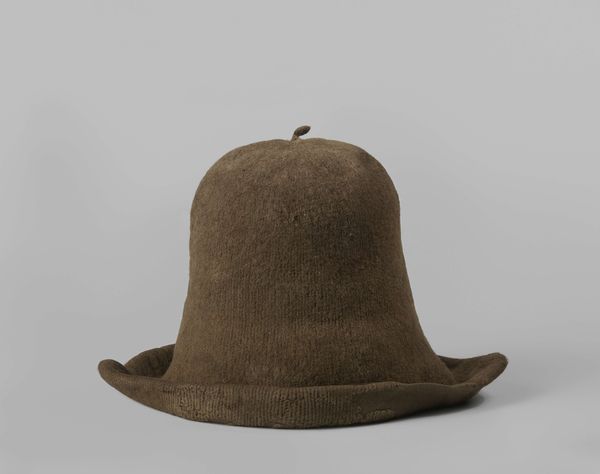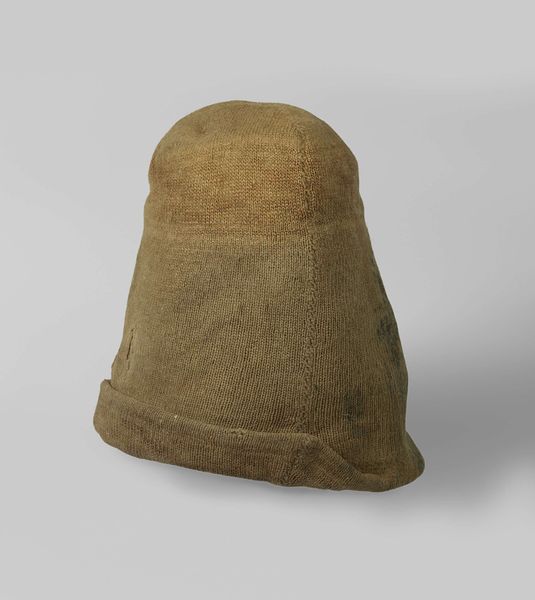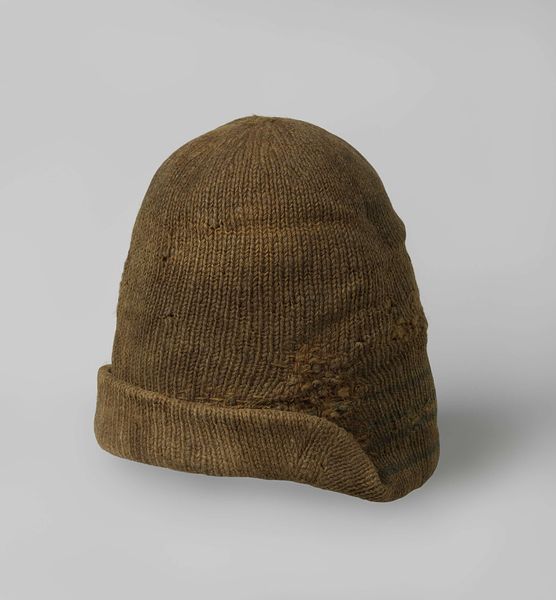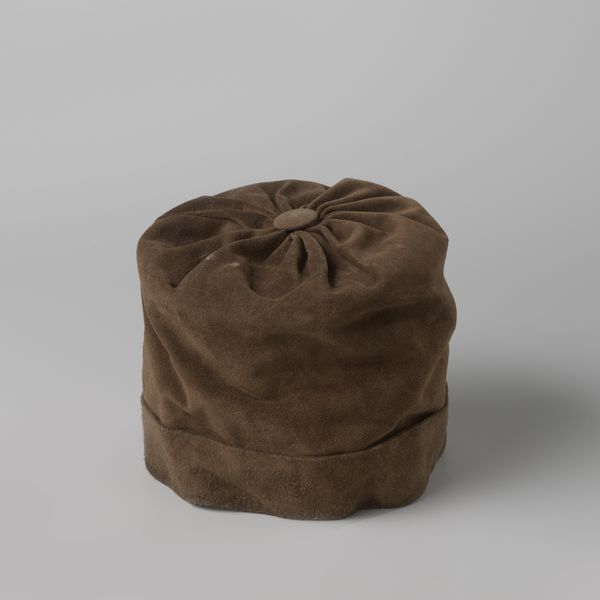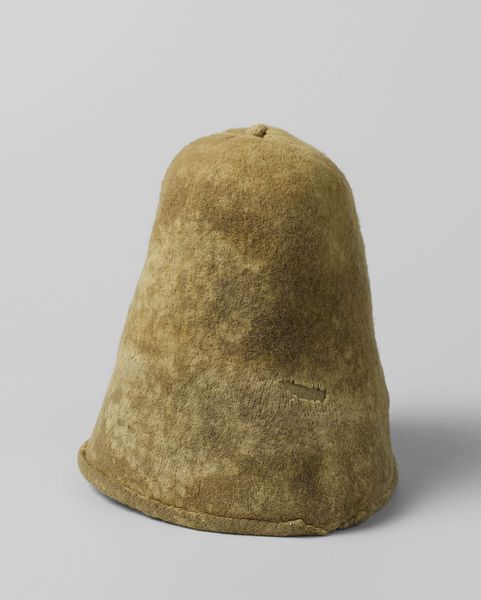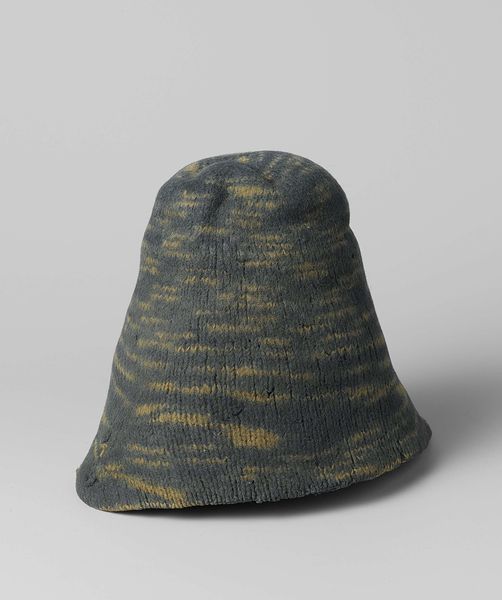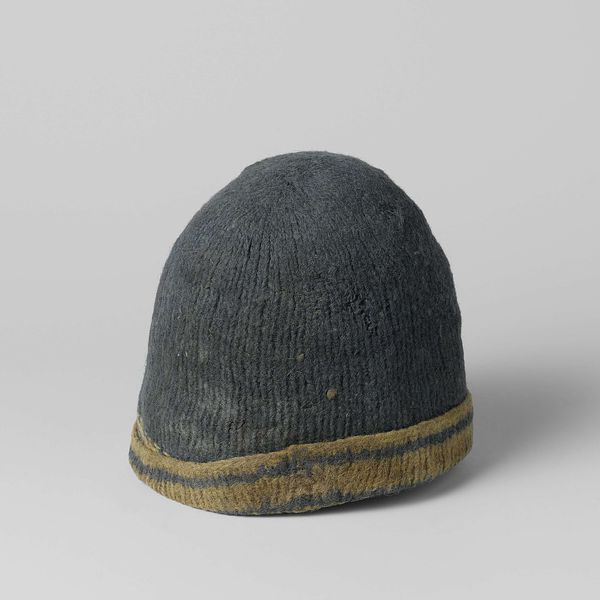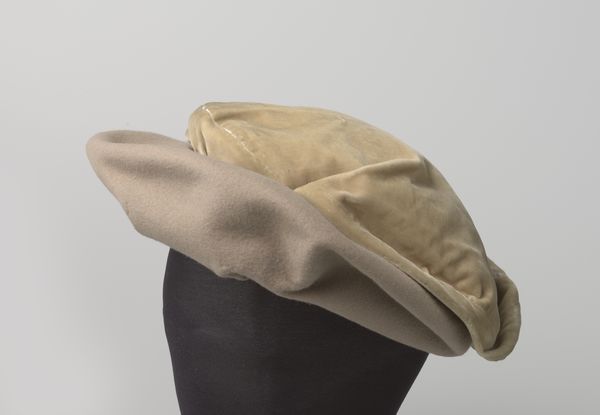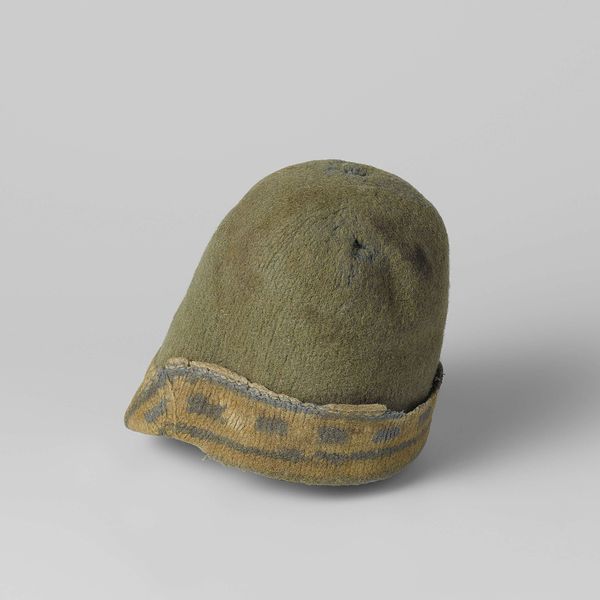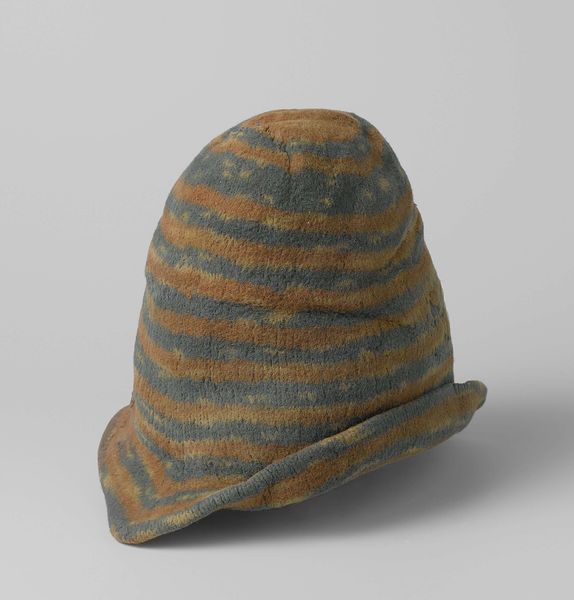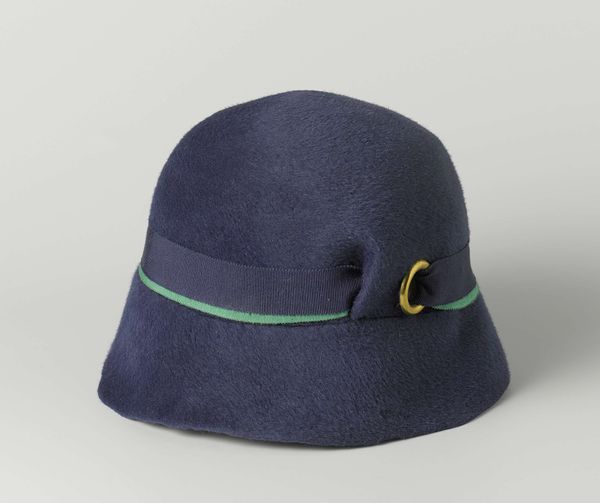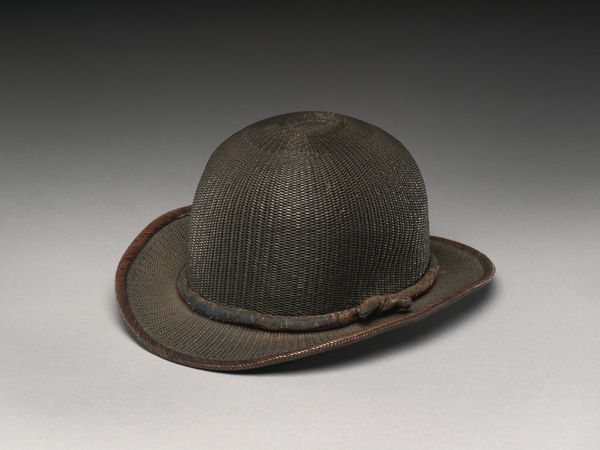
textile
#
dutch-golden-age
#
textile
#
folk-art
Dimensions: width 35 cm, height 30 cm, depth 29.5 cm, circumference 65 cm, height 23 cm
Copyright: Rijks Museum: Open Domain
These woolen caps were worn by Dutch whalers and made with simple materials. Imagine the harsh conditions these sailors faced, the relentless wind and spray of the Arctic seas. These caps, knitted from dense, durable wool, were essential for survival, and represent practical craft. The tight knit would have provided crucial insulation, protecting the whalers from the bitter cold. These caps weren't made in factories, but by hand, likely by the whalers themselves or by women in their families. The skill of knitting, passed down through generations, was a vital part of maritime culture. Each stitch embodies the labor and care involved in creating a garment that could withstand the rigors of whaling. The very existence of these caps speaks to the intimate connection between craft, necessity, and the human struggle against the elements. They remind us that even the simplest objects can carry profound cultural and historical significance.
Comments
rijksmuseum about 2 years ago
⋮
In 1980 archaeologists investigated the graves of 185 Dutchmen – whale hunters and workmen of the train oil refineries – who had died on or near Spitsbergen during the 17th century. The skeletons were still wearing their knitted woollen caps. Each cap was individualized; the men recognized one another only by the pattern of stripes on the caps. The men were bundled up so tightly against the fierce cold that only their eyes were visible.
Join the conversation
Join millions of artists and users on Artera today and experience the ultimate creative platform.

